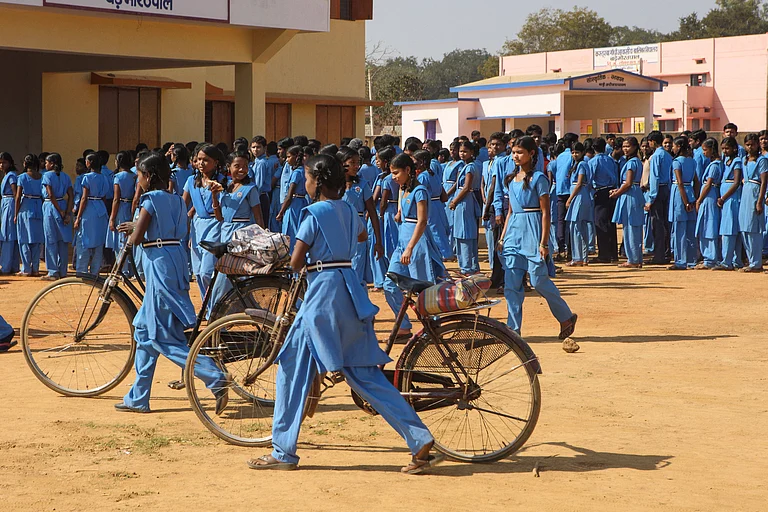An estimated 70 million people across the South-East Asia Region live with hepatitis B or C, marking one of the highest burdens of chronic viral hepatitis globally.
Yet, the majority remain undiagnosed and untreated, warned Dr Catharina Boehme, Officer-in-Charge, WHO South-East Asia Region, on the occasion of World Hepatitis Day observed on Sunday.
Viral hepatitis—an inflammation of the liver that can lead to severe complications such as liver cirrhosis, cancer, and premature death—continues to pose a significant public health challenge in the region. More than 260,000 lives are lost annually, often due to preventable complications associated with untreated hepatitis B and C infections.
“Many of these deaths could be prevented with timely diagnosis and access to treatment. Unfortunately, liver cancer, one of the most serious consequences of chronic hepatitis, is usually diagnosed too late, making curative interventions difficult,” Dr. Boehme noted.
This year’s global theme, ‘Hepatitis: Let’s Break It Down’, calls for dismantling financial, systemic, and social barriers that hinder access to hepatitis prevention, diagnosis, and care. WHO advocates for the decentralisation of services to primary care settings, the simplification of guidelines, and stronger integration of hepatitis services with broader health systems.
“Despite the availability of safe and effective hepatitis B vaccines, accurate diagnostics, and direct-acting antivirals (DAAs) for hepatitis C, service delivery remains fragmented. A lack of awareness, stigma, and high out-of-pocket costs continue to impede progress,” said Dr. Boehme.
She stressed the importance of embedding hepatitis services within essential healthcare packages and aligning them with initiatives for maternal and child health, HIV, STIs, tuberculosis, blood safety, and universal health coverage.
Key strategies include ensuring hepatitis B birth-dose vaccination, completing the full immunisation schedule, expanding safe motherhood services, offering harm-reduction programmes, and engaging in community-based outreach.
Encouragingly, some countries in the region have begun innovating by introducing simplified service models, incorporating hepatitis care under national insurance schemes, and ensuring access to high-risk populations with dignity and respect.
“Progress is possible and is being made. However, what is now required is sustained political commitment and investment to scale these efforts,” Dr. Boehme said.
Viral hepatitis is classified into five types—A, B, C, D, and E. Among these, hepatitis B and C are of particular concern due to their ability to cause chronic liver disease, often progressing silently until the onset of complications such as liver failure or hepatocellular carcinoma. Transmission typically occurs through unsafe blood transfusions, needle-sharing, or unprotected sexual contact.
In contrast, hepatitis A and E are usually spread via the faeco-oral route, through contaminated food or water—posing a persistent threat in regions with poor sanitation and limited access to safe drinking water.
Dr. Abhideep Chaudhary, President of the Liver Transplantation Society of India (LTSI) said, "Hepatitis A and E are largely preventable diseases, yet we see a surge every monsoon due to poor awareness and unsafe water consumption. Hepatitis E can be fatal in pregnant women and can lead to acute liver failure in those with underlying liver disease. In some cases acute Hepatitis A can lead to sever liver failure requiring a liver transplant"
According to estimates from the Liver Transplantation Society of India (LTSI) and hospital-based surveillance data, more than 70% of waterborne hepatitis cases in India during the monsoon are attributable to Hepatitis E, while Hepatitis A remains highly prevalent among children under 15.
Dr. Monika Jain, Director, Dept. of Liver diseases and GI sciences, Sri Balaji Action Medical Institute and Action cancer hospital said, “during monsoon, we are seeing around 30% jump in cases related to hepatitis A infections. We recommend eating properly cooked food and washing hands with soap.”
Health experts emphasize that while Hepatitis B and C get more attention due to their chronic and long-term liver damage, Hepatitis A and E pose an equally serious threat in the short term, especially during monsoons. The symptoms — ranging from fatigue and nausea to jaundice and dark urine — are often ignored until the infection has progressed significantly.
At the same time, the asymptomatic nature of hepatitis B and C in early stages makes detection difficult, highlighting the need for routine screening, public awareness campaigns, and early intervention.
World Hepatitis Day is observed annually on July 28, coinciding with the birth anniversary of Dr Baruch Blumberg, the Nobel Prize-winning scientist who discovered the hepatitis B virus and developed the first diagnostic test and vaccine for the disease.
With global momentum and regional cooperation, the WHO aims to eliminate hepatitis as a public health threat by 2030.


























